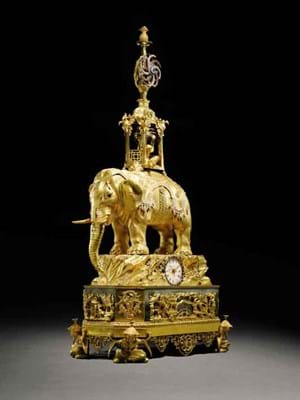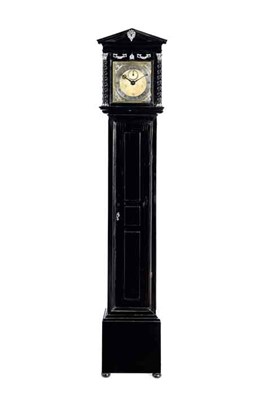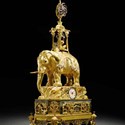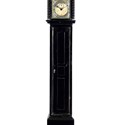The ultimate exotic export timekeeper featured in Sotheby's Treasures sale on July 4. It was one of those all-singing, all-dancing paste-set musical automaton clocks made in the second half of the 18th century for export to the East where they were known as 'Sing Songs'.
The principal automaton element in this instance was a model of an Asian elephant whose trunk, ears and tail are all articulated and can move in conjunction with a choice of six tunes, while the canopied howdah is topped by a finial of typical paste-set spinning Catherine wheel form.
The pachyderm is set on a rockwork base inset with the clock dial, while the musical movement is contained in a canted corner lower section applied with ormolu mounts.
This impressively sized 3ft 4in (1m) high creation is signed by Peter Torckler, a figure about whom relatively little is known beyond the fact that he is listed in London trade directories in 1780-83 working in Clerkenwell, London's clock and watchmaking district. He could also be the same Peter Adolph Torckler born in Riga who arrived in Calcutta in 1795 and was a partner in the mercantile firm of Howell and Torckler.
Provenance
Torckler's elephant clock does have a grand later provenance, however. As discussed when this clock last came up for auction, at Bonhams in 2002, a card inscription that had been inserted into the clock and was included with the lot this time, recorded various repairs made by one Khawaja Mustafa, clockmaker at the Imperial Qajar court, in the early decades of the 20th century.
It is thought that the clock was probably acquired by Naser Al-Din (1831-96), Qajar Shah of Persia.
When the clock was offered at Bonhams it had been acquired by the vendor's mother in the 1960s from an antiques dealer for whom she worked and who is thought to have purchased it at an auction held in 1925 when the Pahlavi took over from the Qajar dynasty.
Sotheby's vendor bought the clock at Bonhams for £250,000. This time around it was put up for sale at a much higher £1m-2m, a reflection of the huge increase in demand, principally from the Far East, for Chinese-taste clocks and their subsequent rise in value.
It found an Asian buyer at a mid-estimate £1.4m.
Christie's Longcase
Having sold an Edward East longcase for £260,000 in May (see ATG No 2044) Christie's added a second longcase by a notable Golden Age horologist to their tally with a silver-mounted, ebony-cased example by Johannes Fromanteel which was included in their July 5 Exceptional sale.
Johannes, the son of Ahasuerus Fromanteel, was apprenticed in 1651 but worked in the Hague with Salomon Coster, where he studied the application of Huygens' newly invented pendulum clock, a significant technological leap forward. His 6ft 2in (1.8m) high clock signed to the dial is fitted with a movement of four latched and ringed pillars with bolt-and-shutter maintaining power.
It has unusually constructed barrels, possibly later replacements and an early anchor escapement.
This piece was formerly in the celebrated Samuel Messer Collection, sold by Christie's in 1991 when it was bought by the London dealer Henry Phillips for £130,000. This time around it came with an estimate of £300,000-£500,000, a pretty punchy guide, perhaps, but a measure of how much top-end Golden Age clocks have increased in value. It sold towards the lower end of that margin at £320,000.
There were three other clocks included in the Exceptional sale, all geared towards Far Eastern interest, being either Chinese-made or Chinese market pieces and all exceeded their estimates.
They were a George III period, ormolu-cased musical automaton table clock made by Henry Borrell c.1795 for the Chinese market that realised £620,000 and two Chinese ormolu-cased and paste-set clocks of Qianlong period made in the Guangzhou workshops: a white marble double-gourd clock that went for £380,000 and a musical and automaton timepiece table clock with contemporary European mechanisms that sold for £460,000.
The buyer's premium at both Sotheby's and Christie's was 25/20/12%.








